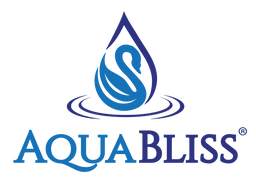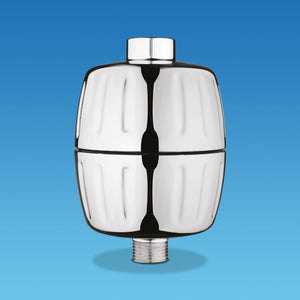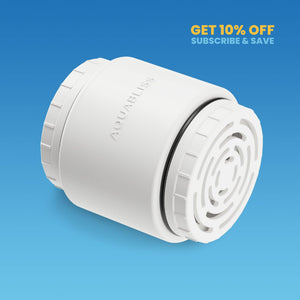Knowing how to purify water at home is an essential skill for maintaining water quality and ensuring that drinking water is safe, even in emergencies. Just because tap water or surface water looks clean doesn’t mean it’s free from contaminants.
For safe consumption, it's crucial to treat water effectively, especially in emergencies when bottled water or other clean sources aren’t available.
Here's a guide to the most effective water purification methods to help you create purified water at home.
Why Purify Water?
Water can contain various contaminants, including chemical contaminants, heavy metals, and disease-causing organisms like bacteria, viruses, and protozoa. Tap water, surface water, and even ground water can harbor dangerous contaminants that pose serious health risks.
Knowing how to purify water can be life-saving in an emergency, allowing you to disinfect water and prevent illnesses from pathogens and pollutants.
7 Effective Ways to Purify Water at Home
There are multiple ways to purify water at home, each with its strengths and limitations. Here are some of the most reliable methods to make your tap or surface water safe for drinking.
1. Boiling

One of the simplest and most accessible ways to purify water is through boiling. Boiling water kills most biological contaminants, including pathogenic bacteria, viruses, and parasites, which are common in untreated water.
Here’s how the boiling process works:
-
Bring the water to a rolling boil for at least one minute to kill disease-causing organisms. If you're at elevations above 6,500 feet, boil water for three minutes due to the lower boiling point.
-
If the water contains visible dirt or floating material, first pass it through a coffee filter, clean cloth, or paper towel to remove debris. This step ensures that the boiling process can focus on killing microorganisms rather than filtering out particles.
-
Once boiled, let the water cool naturally and store it in a clean container for drinking.
Boiling water is effective for eliminating biological contaminants, but it doesn’t remove heavy metals, salts, or other chemical contaminants.
2. Distillation
Distillation is a more advanced water purification method that removes many impurities, including heavy metals and salt.
This process is particularly useful for turning contaminated water into distilled, purified water:
-
Place the water in a large container and position a smaller container inside it to collect condensate.
-
Put a lid on the larger container, ideally a rounded one to direct the condensed water into the smaller container.
-
Heat the setup on the stove until the water begins to boil. The steam rises, leaving contaminants behind, and then condenses as purified water in the smaller container.
-
Let the purified water cool before storing it in a clean, disinfected bottle for later use.
Distillation is effective for producing clean water but can be a slow process, making it better suited for small quantities rather than daily use.
3. Chemical Disinfection Tablets

Chemical tablets, including chlorine tablets and chlorine dioxide tablets, are widely used in emergencies for treating water. Chlorine tablets kill most microorganisms effectively and are easy to use in small quantities.
Here's how to use them:
-
Drop one tablet into your bottle of water (follow the instructions on the package for exact amounts) and let it sit for the recommended time, usually around 30 minutes to 4 hours.
-
Another option is to use household bleach (5%–9% sodium hypochlorite concentration) to disinfect water. Add two drops (0.1 ml) of bleach per liter of water, or double the amount if the water is murky or cold.
Note that while chemical tablets and bleach kill bacteria and other microorganisms, they can leave a strong chlorine taste.
Some chlorine dioxide tablets may be effective against both organic contaminants and certain chemical contaminants.
4. Bleaching
Unscented chlorine bleach with a sodium hypochlorite concentration of 5%–9% is available in most households and can be used to disinfect water by killing disease-causing germs and reducing organic contaminants.
You can also use concentrations of 1% but the amount required will be much more.
How to purify water with bleach at home? If you have a concentration of 5%–9%, add two drops or 0.1 ml of bleach per liter of water. For concentrations of 1%, add ten drops or 0.5 ml of bleach per liter of water.
In case the water is cold, colored, or murky even after filtering with a cloth or paper filter, add double the amount of bleach in it.
5. Solar Water Disinfection

Solar disinfection is an energy-efficient, natural water purification method that uses the sun’s rays to kill pathogens. This method is especially helpful in emergencies when you don’t have other resources available.
-
Fill a clean, clear plastic bottle with water, lay it horizontally on a dark surface, and expose it to direct sunlight for 6 hours. If it’s cloudy, leave the bottle out for 2 days.
-
This method works best with clean, clear water. If the water is cloudy, pre-filter it using a coffee filter or clean cloth to increase the effectiveness of solar disinfection.
Solar disinfection is a slow process but effective for killing most pathogens in small quantities of water.
6. Gravity Water Filters
Gravity filters are convenient, electricity-free water purification devices that use a semi-permeable membrane or ceramic filters to remove impurities. These filters are ideal for everyday use at home and during emergencies.
-
Pour water into the top chamber, which usually contains a filtration cartridge.
-
As water passes through the cartridge, it filters out dangerous contaminants, including bacteria, protozoa, and some chemical contaminants.
-
After several hours, clean, filtered water collects in the bottom chamber, ready for drinking.
High-quality gravity water filters can reduce heavy metals and other chemical contaminants, making them reliable tools for maintaining water quality.
7. Portable UV Light Filter
Using ultraviolet light to disinfect water is a quick and effective way to kill disease-causing organisms in water that’s already clear.
-
If the water appears cloudy, first filter it through a coffee filter or clean cloth to remove any physical debris.
-
Insert the UV light device into the water and follow the device instructions, which usually involve stirring it around for up to 2 minutes to ensure all water is treated.
UV light filters don’t remove chemical contaminants or particles but are highly effective at killing bacteria, viruses, and other biological contaminants.
8. Reverse Osmosis

Reverse osmosis (RO) uses a semi-permeable membrane to remove contaminants from water. This method is commonly used by water utilities and households to ensure high water quality.
-
Water is forced through the RO membrane under pressure, which traps contaminants like heavy metals, organic contaminants, and certain chemicals.
-
Although RO systems can be a significant investment, they provide continuous purified water for human consumption without the need for constant maintenance.
Reverse osmosis is one of the most thorough methods to purify water at home, but it’s often more suitable for regular use than emergencies due to the equipment required.
Additional Tips for Purifying Water
Beyond knowing specific methods, here are a few tips to ensure you maintain water quality when treating water at home:
-
Use a Clean Container: Whether you're boiling or using a chemical tablet, always store purified water in a clean, tightly-lidded container to prevent re-contamination.
-
Double Check with Local Health Departments: In emergencies, consult your local health department about the best water treatment methods for your area.
-
Consider Pre-Filtering: Using a paper towel or coffee filter to strain out floating material helps make purification processes more effective.
-
Check Water Temperature: Cold water requires more chemical disinfectant and additional time to disinfect fully.
Why Purified Water is Essential for Health
Clean, purified water is essential for health, not only for drinking but also for daily activities like cooking and even washing dishes.
Each of these purification methods has its limitations, but they provide a temporary solution to make tap or surface water safe for consumption in emergencies.
In addition to purifying drinking water, pay attention to the water you bathe in. AquaBliss shower filters, for instance, can reduce chemical contaminants that affect skin, hair, and nail health.
For clean water solutions you can trust, explore our products and take control of your water quality today!







